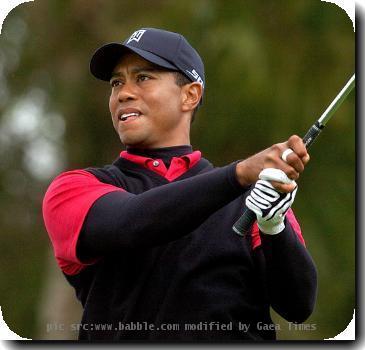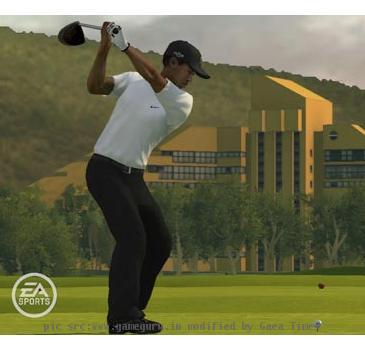Bramlett, once on a fast track with Tiger tutelage, gets to the big stage
By Doug Ferguson, APTuesday, June 15, 2010
Perseverance pays off for Stanford grad
PEBBLE BEACH, Calif. — Joseph Bramlett was a freshman when he first sat in Tiger Woods’ living room with the rest of the Stanford golf team, peppering the world’s No. 1 player about everything from the short game to course management.
They were together again last October, in the days leading up to the Presidents Cup in San Francisco, when Woods visited his alma mater and got into a putting contest with Bramlett.
Nothing could top Tuesday, though.
The lesson was familiar — short game and course management. The classroom could not have been more spectacular.
Woods and Bramlett stood behind the green on the par-3 fifth hole at Pebble Beach, easing their way through a practice round for the U.S. Open. Woods pointed to various spots on the green to show the kid what to expect.
“It’s been an amazing week already,” Bramlett said quietly.
Getting to this stage was not easy.
In a sport still lacking in diversity — Woods remains the only player of black heritage on the PGA Tour — there was reason to believe Bramlett could join him one day.
He grew up outside San Jose in a multiracial family — his father is black, his mother is white — and endured the odd stares at junior events when his parents followed him along. He plastered posters of Woods on his bedroom wall after Woods won the 1997 Masters, and he later competed in the Junior World Championship in San Diego with a team sponsored by the Tiger Woods Foundation.
Bramlett put in the work and was proud of his results.
When he was 14, he became the youngest player ever to qualify for the U.S. Amateur in 2002. He was an All-American his freshman year at Stanford, when he helped lead the Cardinal to an NCAA title. Bramlett flew straight home to California to try to qualify for the U.S. Open, losing out in a playoff.
Surely, there would be other chances.
The first setback came in the middle of his sophomore year when Bramlett slipped on a wet mat in the weight room and injured his right wrist. It turned out to be a bone bruise, but it kept him from competing.
Just as he was beginning to recover — he twice shot 60 in the fall of his junior year — Bramlett was riding his bike when he took a spill over the handle bars, braced for the fall with his hands and injured ligaments and tendons in the same wrist.
“The second one hurt,” Bramlett said, speaking more of the emotional damage than the injury itself. “As soon as it happened, I had a sick feeling in my stomach. I went 13 months not knowing what was wrong and how to fix it. I just had to wait. Surgery wasn’t going to help. It was a little bit frustrating, but it was over and you move on.”
Walking along with Bramlett on Tuesday were his father, Marlo, and Stanford golf coach Conrad Ray, who could appreciate the experience. Ray, who played for the Cardinal on the same team as Woods, qualified for his only U.S. Open in 2005 at Pinehurst No. 2, and spent a practice round with Woods.
It was hard to determine who was more proud.
Marlo Bramlett still remembers the day his son beat him for the first time, at age 12. They were tied at San Jose Country Club when the kid got up-and-down from a bunker by holing a 6-foot putt, turned to point at his father with a wide smile and said, “I got you.”
“I’ve never been more proud as a parent, and I’ve never been more mad as a parent,” the father said with a laugh. “I put my clubs away and went to the office to cool off. And I realized, ‘You’re not going to beat him much more.’”
Marlo Bramlett figures the injuries that slowed his son only made him stronger. To see him at Pebble Beach was proof.
“It means a lot to see him achieve this because he worked so hard at it,” the father said.
Ray arranged the practice round with Woods, sending him a text not long after Bramlett qualified. Woods remembered him well and replied immediately.
“It’s great to see him healthy again,” Woods said. “He’s been struggling with a bad wrist for the last couple of years, and to see him out there and not flinching, not in pain — he’s such a great kid — it’s good to see.”
What impressed Ray the most was how Bramlett insisted on being part of the Cardinal team even when he wasn’t healthy enough to play. His teammates voted him captain for his senior year, and while Bramlett struggled at times, he came through in the clutch.
Stanford, Arizona State and San Diego were in a playoff at the NCAAs for the final spot in the match play portion of the tournament. San Diego had finished its playoff holes in 2 under. Stanford avoided elimination when Bramlett made a 25-foot birdie putt, and it advanced to the final round on the next hole.
“It was a reasonably big fist pump,” he said.
Bramlett was just getting started. He flew back to California after the NCAAs and shot 65-71 at Del Paso in Sacramento to make it by one shot into his first U.S. Open. He might have expected to be here sooner. Then again, he never expected to miss parts of two years with injuries that could have ended all his dreams.
“It helped me grow as a person and understand that it’s not always going to go your way,” he said. “It’s not always going to be easy and it’s not always going to be fair. But you work through it. You take what you get and make the most of it.”
That he has done.
Two days before his practice round with Woods, he graduated from Stanford.
Tags: California, College Sports, Events, Men's Golf, North America, Pebble Beach, San Diego, San Jose, Tiger Woods, United States



